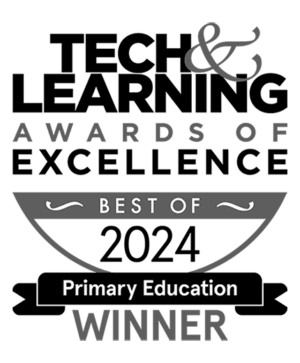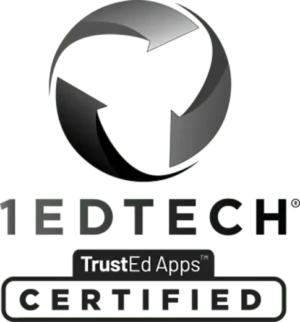

Lindsey Frank, the district-wide climate and social-emotional learning coach for Community Consolidated School District 59 in Illinois, shares strategies for understanding and supporting the social and emotional needs of adults—both in partnerships and coaching cycles—in order to impact student learning.
Change. What does this word bring up for you? Does it evoke feelings of hope and adventure? Does it make you feel worried or distressed? This one small word contains so much energy and I encourage you to take a moment and write down a few words to describe your relationship to change before reading further. Read what you wrote, then try to notice and accept your thoughts.
As instructional coaches, the very essence of change is what brings our work to life. We partner alongside teachers to elevate their craft into its fullest potential through student-centered approaches. No matter the level of experience, content area, grade level, etc., coaches become a sounding board for refined practice. Through this process comes change, but what happens when your relationship with change is different than your coachee’s relationship?
The Good Grief Continuum
Through my personal coaching experiences, I’ve noticed a strong correlation in the coaching process of change to what I call the “Good Grief” Continuum. The Good Grief Continuum is based on a modified Kübler-Ross Model on the stages of grief and can be applied to any size of change. As coaching partnerships become deeper within the cycle, similar behaviors surface that mirror the stages of grief. It’s important to note that I’m not using grief in a negative way here or saying that teaching is a sad case of grieving; however, if we shift our coaching lens to one of empathy and compassion it can help coaches push through the emotional rollercoaster of change. After all, it’s called the Good Grief Continuum because it’s important to help impact others in a positive way both afterward and beyond their current state of grief. The emotional resilience of staff members grows when they have a strong support system alongside them.
Below are the stages of the Good Grief Continuum, a coaching connection that provides an ongoing example of a teacher traveling through the stages, and strategies for how to support the teacher during each stage.
| Coaching Connection | Connected Example | Supportive Strategies |
|---|---|---|
| STAGE 1: SHOCK | ||
|
Teacher finds out that a change is imminent and stops in their tracks, have a sudden jolt in their body, or possibly a blanket of silence falls upon the room. |
The coach shares two strategy ideas with the teacher to try with students, and the teacher pauses. |
|
| STAGE 2: DENIAL | ||
|
The teacher tries to avoid the change. |
The teacher shares that they don’t feel either strategy would work for their students. |
|
| STAGE 3: ANGER | ||
|
The teacher expresses frustration (this may be verbally or nonverbally, and at varying degrees)
*This stage is one of the most challenging stages to support as a coach. |
The teacher begins to vent about their students and the situation. Their emotions may turn towards the coach. |
|
| STAGE 4: BARGAINING | ||
|
The teacher seeks avenues to find a way out. |
The teacher explicitly describes what they are currently using and self-validates why the practices are working, then they begin to ask questions and/or challenge the new idea. |
|
| STAGE 5: DEPRESSION | ||
|
The teacher realizes that the change is necessary and must let go of their prior attachment. |
The teacher’s verbal and body language is passive, they say “yes” to trying the strategy, but have low sustainability. |
|
| STAGE 6: TESTING | ||
|
The teacher begins to “test” the water to see what may work for them. |
The teacher agrees to try one part of the new strategy with support, wants to see it modeled in action, and then makes it their own. |
|
| STAGE 7: ACCEPTANCE | ||
|
The teacher had success with the change and sees a more positive impact than past practice. |
The teacher continues to find success with the new strategy and it becomes a natural part of their teaching practices. |
|
The continuum is not linear, but cyclical, and teachers spend different lengths of time within stages. As coaches, we need to recognize where our partnerships are falling on the continuum and continue to support them to the next level. Not only are coaches supporting one teacher at a time through this process, though, we’re potentially supporting upwards of five or more staff members simultaneously. It’s no wonder why many coaches feel tired, worn-down, and burned-out: we’re taking on the emotions of students, staff, and ourselves. This is where adult social and emotional supports come into focus to create supportive environments conducive for change.
Personal Support Strategies for Change
Supportive strategies revolve around relationships: first with yourself, then with others. Only you can know how to build the relationship internally and this self-knowledge is the foundation of any relationship stemming externally:
“With this kind of deep self-knowledge, a teacher can deftly navigate the thousands of challenges that she faces every day, playing to her strengths and innate resources and drawing on her assets to help her manage rough moments. When an upset happens, she’s unlikely to ‘take it personally,’ because she knows who she is, and she can distinguish between the external event and her self.” —Elena Aguilar
Whichever way you choose to foster the relationship with yourself, be sure to carve out personal time and space daily—even if it’s just a few moments of intentional breathing. You matter, and through filling up your own cup, you can support others throughout the change process!
For relationships with others, reflect on your personal life experiences and the different experiences of your partnerships. These experiences have shaped each of us into who we are today and are the impact of the “Cultural Iceberg” developed by Edward T. Hall. Think about what lies below the waterline and seek to understand, especially when it comes to the idea of change. When connecting the Cultural Iceberg and the Good Grief Continuum, there are many components that contribute to the emotions of the partnership that are not necessarily tied to you or your interactions. Consider re-reading the reflection you wrote down about your relationship to change; are you approaching change in different ways? Do you accept change differently?
With change, there needs to be a level of trust within the relationship. I’ve adapted a tool inspired by Diane Sweeney’s Student-Centered Coaching: A Guide for K-8 Coaches and Principals and invite you to use it as a reflective personal resource. Document important aspects about your relationships with others, notice the strengths and gaps, and know your personality style and the style of others. How can you channel your coaching strengths to any partnership in order to have a positive influence when supporting change?
Wrapping Up
Understanding the progression of change and the emotional impact it has on partnerships helps coaches approach relationships with compassion. We can uncover the hidden roots to why certain emotions and behaviors are occurring, we can anticipate possible future thoughts and actions of staff, and we can know how to begin supporting teachers. To assist with laying the foundation for coaching partnerships built on compassion I’d like to leave you with few resources I’ve created:
About our Guest Blogger
Lindsey Frank is the district-wide climate and social-emotional learning coach for Community Consolidated School District 59 in Illinois. Prior to coaching, she was a K-5 learning behavior specialist for five years there, taught one year in School District 71 as a K-8 Interventionist, was a 7th-grade pre-algebra teacher, and a K-8 guided reading teacher. She has a dual licensure in general education and special education, has her ESL/ELL endorsement, and her Master’s in Educational Leadership.
With her love of learning, she’s also certified in restorative practices, has her wellness and 200 CYT certification in mindfulness and yoga within education through Breathe for Change, and is involved on the state board for the Illinois Council for Exceptional Children. Follow Lindsey on Twitter @LindseyFrank88!
Stay Connected
News, articles, and tips for meeting your district’s goals—delivered to your inbox.





























